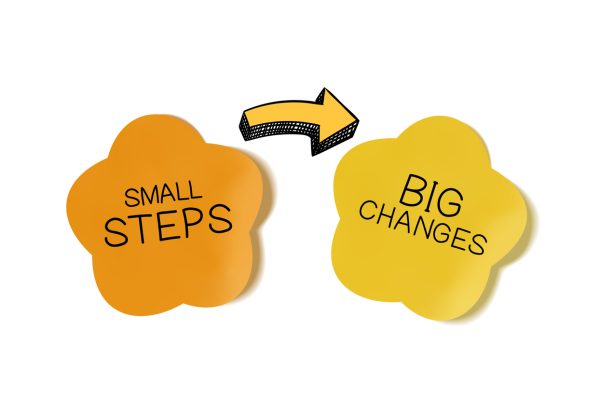-
Table of Contents
- Introduction
- The Importance of Sitemaps for Website Navigation
- Understanding the Structure and Purpose of Sitemaps
- Step-by-Step Guide to Creating a Sitemap for Your Website
- Best Practices for Optimizing Sitemaps for Search Engines
- Tools and Plugins to Simplify Sitemap Creation for Websites
- Conclusion
A sitemap is a file that lists all the pages of a website, helping search engines and users navigate its content. To create a sitemap, you can use various online tools or generate one manually by following specific XML formatting guidelines.
Introduction
A sitemap is a file that lists all the pages of a website, providing a hierarchical structure and organization of its content. It serves as a blueprint for search engines to understand and navigate the website’s structure, making it easier for them to crawl and index the pages. Creating a sitemap involves identifying all the pages on the website and organizing them in a logical manner. This can be done manually by creating an XML file or by using various online tools and plugins that generate sitemaps automatically.
The Importance of Sitemaps for Website Navigation
Have you ever visited a website and found yourself lost, not knowing where to go or how to find the information you were looking for? It can be frustrating, right? Well, that’s where sitemaps come in. In this article, we’ll explore what a sitemap is and why it’s important for website navigation. We’ll also discuss how you can create a sitemap for your own website.
So, what exactly is a sitemap? Simply put, a sitemap is a file that lists all the pages on a website. It serves as a roadmap, guiding both users and search engines through the various sections and content of a website. Think of it as a table of contents for your website.
Now, you might be wondering why sitemaps are important for website navigation. Well, let’s imagine you’re planning a road trip to a new city. Without a map or GPS, you would likely get lost and waste a lot of time trying to find your way around. The same principle applies to websites. A sitemap helps visitors quickly and easily find the information they’re looking for, improving their overall user experience.
But it’s not just users who benefit from sitemaps. Search engines like Google also rely on sitemaps to crawl and index websites more efficiently. When search engines crawl a website, they follow the links provided in the sitemap to discover and understand the site’s structure. This helps them index the pages more accurately, increasing the chances of your website appearing in relevant search results.
Now that we understand the importance of sitemaps, let’s talk about how you can create one for your website. There are several ways to generate a sitemap, but one of the easiest methods is to use online sitemap generators. These tools allow you to enter your website’s URL and automatically generate a sitemap file for you.
Once you have your sitemap file, you’ll need to upload it to your website’s root directory. This ensures that search engines and visitors can easily access it. You can also submit your sitemap to search engines through their webmaster tools, which can further improve your website’s visibility in search results.
When creating a sitemap, it’s important to consider the structure and organization of your website. A well-structured sitemap should include all the important pages and sections of your site, making it easy for both users and search engines to navigate. You can also include additional information in your sitemap, such as the last modified date of each page or the priority level of certain pages.
In conclusion, sitemaps play a crucial role in website navigation. They act as a guide, helping users and search engines find their way around your site. By creating a well-structured sitemap, you can improve the user experience, increase your website’s visibility in search results, and ultimately drive more traffic to your site. So, if you haven’t already, it’s time to create a sitemap for your website and reap the benefits it offers.
Understanding the Structure and Purpose of Sitemaps
Have you ever wondered what a sitemap is and why it’s important for your website? In this article, we’ll explore the structure and purpose of sitemaps, and guide you through the process of creating one for your own website.
So, what exactly is a sitemap? Simply put, a sitemap is a file that lists all the pages on your website. It serves as a roadmap for search engines, helping them navigate and understand the structure of your site. Think of it as a blueprint that guides search engine bots to crawl and index your web pages effectively.
The primary purpose of a sitemap is to improve the visibility of your website in search engine results. By providing search engines with a clear and organized overview of your site’s content, you increase the chances of your pages being indexed and ranked higher in search results. This, in turn, can drive more organic traffic to your website.
Creating a sitemap may sound like a daunting task, but it’s actually quite simple. There are several tools available that can generate a sitemap for you automatically, such as Yoast SEO plugin for WordPress or online sitemap generators. These tools crawl your website and create a sitemap file that you can then submit to search engines.
Alternatively, if you prefer a more hands-on approach, you can create a sitemap manually. Start by listing all the pages on your website, including the main pages, subpages, and any other important content. Organize them in a hierarchical structure, with the homepage at the top and subsequent pages branching out from there.
Once you have your list, you can use XML or HTML to create the actual sitemap file. XML is the preferred format for search engines, as it provides more detailed information about each page, such as the last modified date and the priority of the page. HTML sitemaps, on the other hand, are primarily designed for human visitors and can be placed on your website to help users navigate through your content.
When creating your sitemap, it’s important to keep in mind that search engines have certain limitations. For example, they can only crawl a certain number of pages per website, so it’s crucial to prioritize the most important pages in your sitemap. Additionally, make sure to update your sitemap regularly to reflect any changes or additions to your website.
Once you have your sitemap ready, it’s time to submit it to search engines. Most search engines have a dedicated section in their webmaster tools where you can submit your sitemap. This allows search engines to discover and index your pages more efficiently, ultimately improving your website’s visibility in search results.
In conclusion, a sitemap is a crucial tool for improving the visibility of your website in search engine results. By providing search engines with a clear and organized overview of your site’s content, you increase the chances of your pages being indexed and ranked higher. Whether you choose to use automated tools or create a sitemap manually, the process is relatively simple and can greatly benefit your website’s SEO efforts. So, don’t overlook the importance of a sitemap and start creating one for your website today!
Step-by-Step Guide to Creating a Sitemap for Your Website
Have you ever wondered what a sitemap is and why it’s important for your website? In this step-by-step guide, we will explore the concept of a sitemap and show you how to create one for your website.
So, what exactly is a sitemap? Simply put, a sitemap is a file that lists all the pages on your website. It serves as a roadmap for search engines, helping them navigate and understand the structure of your site. This, in turn, improves your website’s visibility in search engine results.
Creating a sitemap for your website is not as complicated as it may sound. In fact, there are several tools available that can make the process a breeze. One popular option is to use a sitemap generator, which automatically crawls your website and generates a sitemap for you. These tools are often free and can save you a lot of time and effort.
To get started, you’ll need to choose a sitemap generator that suits your needs. There are many options available, so take some time to research and find one that is user-friendly and reliable. Once you’ve selected a generator, follow the instructions provided to install it on your website.
Once the generator is installed, it’s time to start creating your sitemap. Simply click on the “Generate Sitemap” button, and the tool will begin crawling your website. This process may take a few minutes, depending on the size of your site.
Once the generator has finished crawling your website, it will generate a sitemap file for you. This file will typically be in XML format, which is the standard format for sitemaps. You can then download this file and save it to your computer.
Now that you have your sitemap file, it’s time to submit it to search engines. This step is crucial because it allows search engines to discover and index your website more efficiently. Most search engines have a dedicated section where you can submit your sitemap. Simply locate this section and follow the instructions provided to submit your sitemap file.
In addition to submitting your sitemap to search engines, it’s also a good idea to add it to your website. This way, both search engines and visitors can easily access it. To do this, simply upload the sitemap file to the root directory of your website. Once uploaded, you can create a link to the sitemap in your website’s footer or navigation menu.
Congratulations! You have successfully created and submitted a sitemap for your website. By doing so, you have taken an important step towards improving your website’s visibility in search engine results.
In conclusion, a sitemap is a crucial tool for any website owner. It helps search engines understand the structure of your site and improves your website’s visibility in search engine results. Creating a sitemap is a relatively simple process, thanks to the availability of user-friendly sitemap generators. By following the steps outlined in this guide, you can easily create and submit a sitemap for your website. So, what are you waiting for? Start creating your sitemap today and watch your website soar in search engine rankings!
Best Practices for Optimizing Sitemaps for Search Engines
When it comes to optimizing your website for search engines, one important aspect to consider is the creation of a sitemap. A sitemap is essentially a blueprint of your website, outlining all the pages and content it contains. It helps search engines understand the structure of your site and ensures that all your pages are indexed and ranked properly. In this article, we will discuss some best practices for optimizing sitemaps for search engines.
First and foremost, it is crucial to understand the different types of sitemaps. There are two main types: XML sitemaps and HTML sitemaps. XML sitemaps are specifically designed for search engines, while HTML sitemaps are created for human visitors. Both types serve different purposes, but for the purpose of search engine optimization, we will focus on XML sitemaps.
To create an XML sitemap, you can use various tools and plugins available online. These tools generate a sitemap file that you can then upload to your website’s root directory. Once uploaded, you need to notify search engines about the existence of your sitemap by submitting it through their webmaster tools. This ensures that search engines crawl and index your website more efficiently.
Now that you have created and submitted your sitemap, it’s time to optimize it for search engines. One important aspect to consider is the inclusion of all your important pages in the sitemap. This includes not only your main pages but also any subpages or blog posts that you want to be indexed. By including all relevant pages, you increase the chances of them being discovered and ranked by search engines.
Another best practice is to prioritize your pages within the sitemap. This means assigning a priority value to each page, indicating its importance relative to other pages on your site. This can be done by assigning a value between 0.0 and 1.0, with 1.0 being the highest priority. By prioritizing your pages, you are telling search engines which pages are more important and should be crawled and indexed first.
In addition to prioritizing your pages, it is also important to set the frequency at which your pages are updated. This can be done by specifying the last modification date for each page in the sitemap. By providing this information, search engines can determine how often they should revisit your pages for updates. This is particularly useful for websites that frequently publish new content or update existing pages.
Lastly, it is important to regularly update and maintain your sitemap. As your website evolves and new pages are added, it is crucial to keep your sitemap up to date. This ensures that search engines have the most accurate and current information about your website’s structure. Additionally, if you make any changes to your website’s URL structure, it is important to update your sitemap accordingly to avoid any broken links or indexing issues.
In conclusion, optimizing your sitemap for search engines is an essential part of website optimization. By creating an XML sitemap, including all relevant pages, prioritizing them, and specifying their update frequency, you can ensure that search engines crawl and index your website more effectively. Regularly updating and maintaining your sitemap is also crucial to keep it accurate and up to date. By following these best practices, you can improve your website’s visibility and ranking in search engine results.
Tools and Plugins to Simplify Sitemap Creation for Websites
Have you ever wondered what a sitemap is and why it’s important for your website? In this article, we’ll explore the concept of sitemaps and how you can create one for your own website. But don’t worry, we won’t get too technical – we’ll keep it conversational and easy to understand.
So, what exactly is a sitemap? Simply put, a sitemap is a file that lists all the pages on your website. It serves as a roadmap for search engines, helping them navigate and understand the structure of your site. Think of it as a table of contents for your website, making it easier for search engines to crawl and index your pages.
Why is a sitemap important? Well, for starters, it helps improve your website’s visibility in search engine results. When search engines like Google crawl your site, they use the sitemap to discover and index all your pages. Without a sitemap, some of your pages might go unnoticed, resulting in lower visibility and fewer visitors.
Creating a sitemap may sound like a daunting task, especially if you’re not familiar with coding or web development. But fear not! There are plenty of tools and plugins available that can simplify the process for you.
One popular tool is Yoast SEO, a WordPress plugin that not only helps with search engine optimization but also includes a sitemap generator. With Yoast SEO, you can easily create and customize your sitemap without any technical knowledge. Simply install the plugin, navigate to the XML Sitemaps section, and enable the feature. Yoast SEO will automatically generate a sitemap for your website, which you can then submit to search engines.
Another handy tool is Google Search Console. This free tool from Google allows you to monitor and optimize your website’s presence in search results. It also provides a sitemap submission feature, making it easy to submit your sitemap directly to Google. All you need to do is sign up for a Google Search Console account, add your website, and navigate to the Sitemaps section. From there, you can submit your sitemap and track its indexing status.
If you’re using a different content management system (CMS) or website builder, chances are there’s a sitemap plugin or feature available for you as well. For example, Joomla has the Xmap extension, Drupal has the XML Sitemap module, and Wix has a built-in sitemap generator. Simply search for sitemap plugins or features specific to your platform, and you’ll likely find a solution that suits your needs.
In conclusion, creating a sitemap for your website is crucial for improving its visibility in search engine results. Thankfully, there are plenty of tools and plugins available that can simplify the process for you. Whether you’re using WordPress, Joomla, Drupal, or any other CMS, there’s likely a sitemap generator or plugin that can help you create and submit your sitemap with ease. So, don’t overlook the importance of a sitemap – it’s a small investment of time that can yield significant benefits for your website’s SEO.
Conclusion
A sitemap is a file that lists all the pages of a website to help search engines and users navigate through its content. It provides a hierarchical structure of the website’s pages, making it easier for search engines to crawl and index the site. To create a sitemap for a website, you can use various tools or plugins that generate XML sitemaps automatically. Alternatively, you can manually create a sitemap by listing all the pages and their URLs in a structured format. Once created, the sitemap should be submitted to search engines through their respective webmaster tools or by adding it to the website’s robots.txt file.



